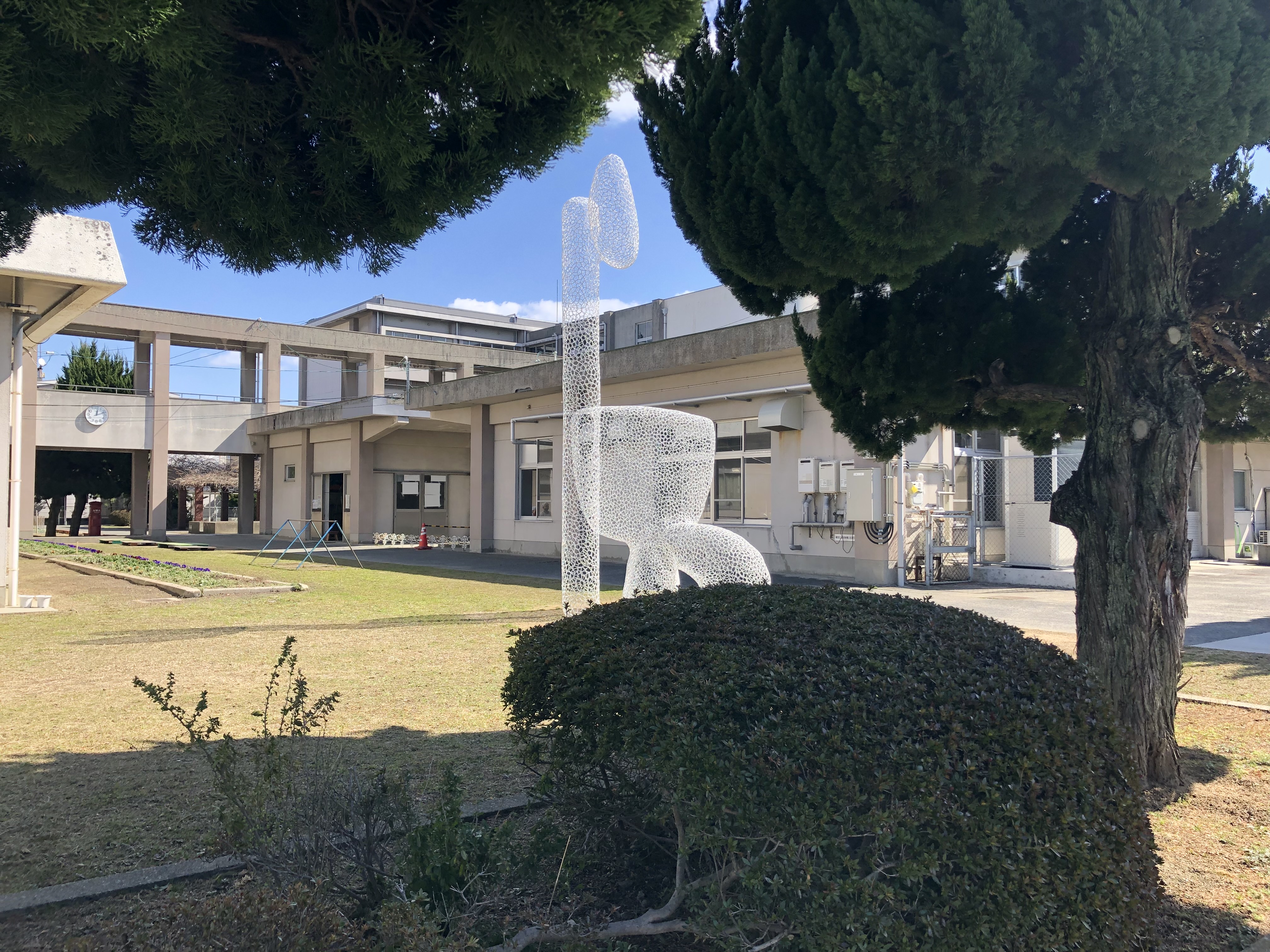This article originally appeared in the April 2023 issue of CONNECT.
Sydney Michael (Yamaguchi)
I received a request for a school visit the other day. That is not, in and of itself, unusual. The other Yamaguchi CIRs and I are frequently requested for trips around the prefecture to present about our home countries and cultures. Rather, it was the content of this request that made it so unique.
“Mizome Elementary School, Ube City. We would like all the prefectural CIRs to come and talk about statues.”
I had to make a presentation about. . . statues?
Having wracked my brain for a while considering how I was supposed to make a cultural presentation about statues, I eventually settled on introducing some famous American landmarks, like the Statue of Liberty, Mount Rushmore, and Cloud Gate (the Bean), and included photos of myself at these locations.
Being satisfied with my interpretation of the request, I was struck when upon entering the school grounds we came face-to-face with Plantroncia Ube, a large, white, metal sculpture that felt like it had been taken straight out of a modern art exhibit and plopped down into the courtyard of this otherwise average-looking elementary school.
It occurred to me that I may have misunderstood the request for a talk about statues.
After we were led into the classroom and introduced, the teacher explained that each of the fifteen students would give a brief presentation, the CIRs would share their thoughts on the presentations, and then the CIRs would present. I took out my notebook and prepared to note down students’ favorite shows and favorite colors, as those were the contents of every mini-presentation I had seen students give in elementary school.
The first student came up, connected their tablet to the TV, and displayed a photo of the sculpture we saw outside their school. It was a wide shot, taken from the position of someone entering the school as we had done not 30 minutes previously. The student shared their name, and then started to talk about why they had chosen this photo. “You can see Plantronica Ube and the school at the same time, so I think it’s a nice picture. It’s nice to be able to see a statue for free every day, so I’m glad we have a statue.”
The next student approached, connected their tablet, and again a photo of the sculpture appeared, but this time taken from so low they must have gotten down into the grass to capture it. That student explained that they liked seeing the sculpture from this angle, as you could see the tree and the sky through the sculpture, which made the shape look different from when it’s viewed from a standing position. I noted this down.
One after another the students approached and explained their photos, and the importance of incorporating sculptures into a city. Though only in fifth grade, I was impressed with their observations and opinions.
They took photos capturing the sun as a backlight to the sculpture, and the clouds surrounding it. The angle one views from, the time of day, climbing and viewing the sculpture from above—these all change how one experiences a statue. Not only that, but seeing sculptures in their everyday environment exposes children and adults to new forms of art, brightens an otherwise empty area, and allows one to feel how the artist was feeling. One can bring one’s own experiences to the sculpture, which then provides a unique viewing experience for every person, even if viewed at the same time and in the same place.
All of this I furiously jotted down, not having been prepared for a life lesson on the importance of art while sitting in a small wooden chair in a fifth grade classroom.
Of course, kids are kids, and some of them were less profound, but none of them were unthoughtful. A favorite presentation of mine came from the student that thought the sculpture looked like a rabbit when viewed from a certain angle, who took the liberty of drawing out the ears and eyes so we, too, could see the rabbit.
You may be curious to know, as I was, why this elementary school is in possession of a large, metal, modern sculpture. When we left the school to head back to our office later that day, we passed by the sculpture again. I felt compelled to stop and look at it for a minute, and took some photos. I then noticed the plaque at the base.
Plantronica Ube was previously an entry in the UBE Biennale International Sculpture Competition, the first outdoor sculpture exhibition, and currently the largest sculpture festival in Japan. Every two years about 100 pieces are installed in Tokiwa Park, including previous favorites. The city purchases the winning pieces, and either gives them a permanent home at the park, or installs them elsewhere around the city.
It wasn’t just these students, but also the residents of the city that had embraced life amongst the sculptures.
Inspired by the students and their photos, I focused my presentation that day less on where famous American sculptures were and why they had been designed, and instead talked about my experience visiting each of them, when I had gone and why, and the impression they had left on me. This went over very well.
I finally understood why we had been asked to talk about statues. They’re everywhere, and while you’ve likely gone out of your way to see the largest and most famous ones, you might forget to notice those closest to home.
Take a walk and look around. What do you see?
Sydney Michael is a first-year CIR, fourth-year JET in Yamaguchi Prefecture. She got her undergraduate degree in Asian Languages and Literatures. Currently, her favorite sculpture in Tokiwa Park is [[i]]The Birth of Life[[i]], though this is bound to change.




